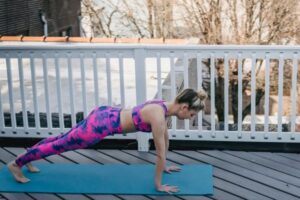
The trunk’s core is crucial for bodily function and strength.
The core musculature of the trunk is perhaps the most important part of the body when considering function and strength (1). The core is what allows connectivity and function between the upper and lower extremity. It houses the internal organs and central nervous system and is involved in almost every aspect of human movement.(*)
The core is the main source of support and stabilization for the body.
When a strong core is not present, dysfunction and weakness occurs. (2)This can lead to sub-optimal performance in most all activities of daily living as well as predispose an individual to potential injury. Because of this, it is critical that a training program address the core to ensure strength and stabilization.(*)
Benefits of Core Strength
By now, I hope, and even confidently assume, that I have already convinced you to either start doing and/or continue performing some form of systematic strength training. (3)
You understand that MET rate and calorie utilization are higher running versus walking ,(4 , 5 )and more advantageous to most, add that a stronger body makes daily physical tasks more manageable. (6)
What happens without strength, muscle or even lasting fitness ability
If so, we both need to recognize that without strength, muscle or even enduring fitness capacity, one’s quality of life and ease of independent living is compromised. for many of the Masters athletes and for those not burned by mindless convention, taking care of oneself to a ripe old age is a sacred act.
It’s the virtue of cherished independence! And for the younger to middle-aged person, fitness enthusiast or athlete that may have no desire to etch into stone what the future might hold, why not fortify your function in the present, just in case the hands of time deal you an unexpected adversity. When accidents happen and illnesses come along, a stronger body and good reserve strength can be an added insurance policy for easier rehabilitation and successful recovery.
Although we cannot control specific results of our health and destiny
we at least have the power to enhance the odds in our favor. Full circle now, to the specific effects on strength training with regards to the Core. Core training, when done with fitness balls, wobble boards, and/or free weights, is an excellent way to maintain athleticism by improving balance and proprioception.(7)
An example of a free weight core exercise would be the dumbbell twist, for which an athlete holds a dumbbell or medicine ball and twists at the waist from side to side. (8)
A more obvious form of practical efficacy as it pertains to the involvement of core muscles would be the transition from machine-based exercises to free weight exercises that mimic every day or sport-specific movements.
An athlete with strong core strength is less likely to be injured and better prepared for difficult tasks
An athlete or fitness enthusiast with sound proficiency in core strength would be better equipped to handle arduous or awkward tasks and will be more likely to avoid certain injuries sustained because of sudden directional changes, slips, and trips. Such prevention is the consequence of a body that can effectively distribute and absorb forces in the presence of external loading, impacting and/or collision. A body that is strong from the inside out. Core training can also benefit the lower lumbar region by reducing the likelihood of some forms of low back pain and is thus, a tool of great value to those with a history of back problems. (9)


